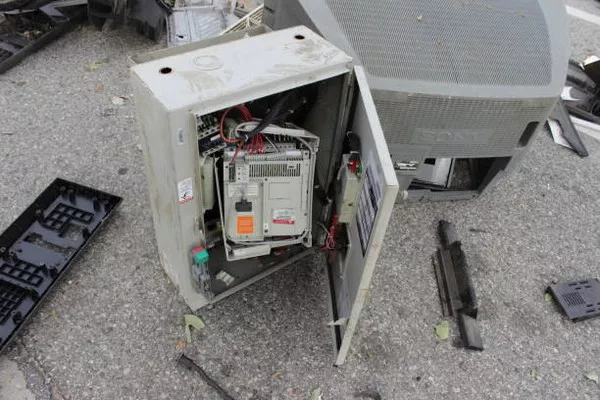In today’s world, where uninterrupted power supply is essential for both residential and commercial settings, standby generators have become a popular solution to mitigate the impact of power outages. These generators provide a reliable source of backup power, ensuring that critical systems and appliances continue to function even during blackouts. However, one aspect that potential users often consider is the cost associated with running a standby generator. From fuel expenses to maintenance and installation costs, understanding the total expenditure involved is crucial for making informed decisions. In this article, we delve into the various factors that contribute to the operational costs of standby generators.
Initial Investment: Installation and Equipment Costs
The first expense to consider when acquiring a standby generator is the initial investment, which includes the cost of the generator itself and its installation. Standby generators come in various sizes and capacities, ranging from small units suitable for residential use to larger models designed for commercial or industrial applications. The cost of the generator depends on factors such as its power output, brand, and features.
On average, residential standby generators can cost anywhere from $3,000 to $10,000 or more, excluding installation. Commercial-grade generators, with higher power capacities, can range from $10,000 to $50,000 or higher. Installation costs vary depending on factors such as the complexity of the setup, local labor rates, and whether any additional equipment, such as transfer switches or concrete pads, is required. Installation expenses typically add several thousand dollars to the total investment.
Fuel Costs
Another significant cost associated with running a standby generator is fuel. Most standby generators run on diesel, natural gas, propane, or bi-fuel (a combination of diesel and natural gas). The choice of fuel can impact both the initial setup costs and ongoing operational expenses.
Diesel generators are typically more fuel-efficient than those running on propane or natural gas, but diesel fuel tends to be more expensive. Conversely, natural gas is often cheaper than diesel but may require a dedicated pipeline or storage tank, adding to the installation costs. Propane strikes a balance between diesel and natural gas in terms of cost and availability.
The fuel consumption of a standby generator depends on its size, load capacity, and runtime. Larger generators and those operating at higher loads consume more fuel. On average, standby generators consume between 0.2 to 0.6 gallons of fuel per hour per kilowatt (kW) of power produced. Considering prevailing fuel prices and the frequency of power outages in a given area, estimating fuel costs over time is essential for budgeting purposes.
Maintenance and Service
Like any mechanical equipment, standby generators require regular maintenance to ensure optimal performance and longevity. Maintenance tasks may include oil and filter changes, inspection of fuel and coolant levels, testing of electrical components, and general troubleshooting.
Most manufacturers recommend servicing standby generators at least once a year, with additional inspections and tune-ups recommended every 200 to 300 hours of operation. Maintenance costs vary depending on the size and type of generator, as well as the complexity of the service required.
In addition to routine maintenance, standby generators may occasionally require repairs due to wear and tear or unexpected issues. It’s essential to factor in potential repair costs when budgeting for generator operation.
Environmental Considerations: Emissions and Regulations
In recent years, there has been increasing emphasis on environmental sustainability and regulations aimed at reducing emissions from diesel and gas-powered equipment, including standby generators. Depending on the type of fuel used and local regulations, generator owners may incur additional costs to comply with emission standards.
For example, diesel generators may require the installation of emissions control devices such as diesel particulate filters (DPF) or selective catalytic reduction (SCR) systems to meet emission requirements. Similarly, generators running on natural gas or propane must adhere to regulations governing gas emissions and venting.
Compliance with environmental regulations may involve upfront expenses for equipment installation and ongoing costs for monitoring, maintenance, and emissions testing. Failure to comply with regulations can result in fines and penalties, making it imperative for generator owners to stay informed about relevant laws and requirements.
Insurance and Warranties
Insurance is another cost consideration for standby generator owners. While homeowners’ insurance policies typically cover damage to the generator caused by events such as fire or theft, additional coverage may be necessary for comprehensive protection. Commercial and industrial users may require specialized insurance policies tailored to their specific needs, covering factors such as business interruption and liability.
Warranties provided by generator manufacturers are essential for safeguarding against unexpected equipment failures and defects. Extended warranties may be available for an additional fee, providing peace of mind and potentially reducing long-term repair costs.
Total Cost of Ownership
Calculating the total cost of ownership (TCO) is essential for understanding the lifetime expenses associated with owning and operating a standby generator. TCO encompasses not only the initial purchase and installation costs but also ongoing expenses such as fuel, maintenance, repairs, insurance, and compliance-related costs.
By evaluating TCO over the expected lifespan of the generator, which can range from 10 to 30 years depending on usage and maintenance, users can make informed decisions about whether investing in a standby generator is financially viable. Additionally, TCO analysis allows for comparisons between different generator models and fuel types to determine the most cost-effective solution for specific needs.
See Also How Many Watt Generator To Run Central AC
Conclusion
Standby generators offer invaluable peace of mind by providing backup power during outages, ensuring continuity of operations for both residential and commercial users. However, understanding the costs associated with running a standby generator is crucial for making informed decisions and budgeting effectively. From initial installation expenses to ongoing fuel, maintenance, and compliance costs, various factors contribute to the overall cost of ownership. By carefully assessing these factors and conducting a thorough TCO analysis, generator owners can optimize their investment and enjoy reliable backup power for years to come.

